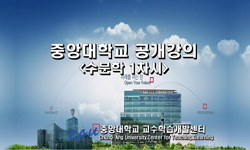The loss of nitrogen and phosphorus from sediments in two watersheds, one naturally regenerating and one artificially planted, in Sacheon-myun, Gangneung-si, Gangwon Province, were measured two years after a forest fire in 2000. Sediment losses occurr...
http://chineseinput.net/에서 pinyin(병음)방식으로 중국어를 변환할 수 있습니다.
변환된 중국어를 복사하여 사용하시면 됩니다.
- 中文 을 입력하시려면 zhongwen을 입력하시고 space를누르시면됩니다.
- 北京 을 입력하시려면 beijing을 입력하시고 space를 누르시면 됩니다.


Effects of Different Restoration Practices on Nutrient Loss from Sediments after a Forest Fire in Two Watersheds
한글로보기https://www.riss.kr/link?id=A105204812
- 저자
- 발행기관
- 학술지명
- 권호사항
-
발행연도
2007
-
작성언어
English
- 주제어
-
등재정보
SCOPUS,KCI등재
-
자료형태
학술저널
- 발행기관 URL
-
수록면
265-269(5쪽)
- 제공처
- 소장기관
-
0
상세조회 -
0
다운로드
부가정보
다국어 초록 (Multilingual Abstract)
The loss of nitrogen and phosphorus from sediments in two watersheds, one naturally regenerating and one artificially planted, in Sacheon-myun, Gangneung-si, Gangwon Province, were measured two years after a forest fire in 2000. Sediment losses occurred five times in the course of the year. In the artificially planted watershed, $50{\sim}140$ times more nitrogen and $54{\sim}139$ times more phosphorus were lost with sediments during heavy rains, from July to August, than in the naturally regenerating watershed. When the typhoon Rusa struck the country, 1,389 times more nitrogen and 1,647 times more phosphorus were lost from the artificial watershed. In spite of the limited scope of this study, these results suggest that artificially planted watersheds are extremely vulnerable to catastrophic natural disasters such as typhoons. Elevated loss of nutrients in the artificially planted watershed might have resulted from the mechanized silvicultural practices employed immediately after the fire. To maximize soil preservation, the timing and necessity of plantation practices should be reconsidered, and rapidly regenerating vegetation should be protected to promote nutrient uptake and to mitigate nutrient loss from burned forests.
동일학술지(권/호) 다른 논문
-
Decomposition and Nutrient Dynamics of Aquatic Macrophytes in Lake Paldang
- 한국생태학회
- 신진호
- 2007
- SCOPUS,KCI등재
-
- 한국생태학회
- 김길원
- 2007
- SCOPUS,KCI등재
-
Foraging Habitat Preferences of Herons and Egrets
- 한국생태학회
- 최유성
- 2007
- SCOPUS,KCI등재
-
- 한국생태학회
- Haidary Miandoab, Azam
- 2007
- SCOPUS,KCI등재




 ScienceON
ScienceON



